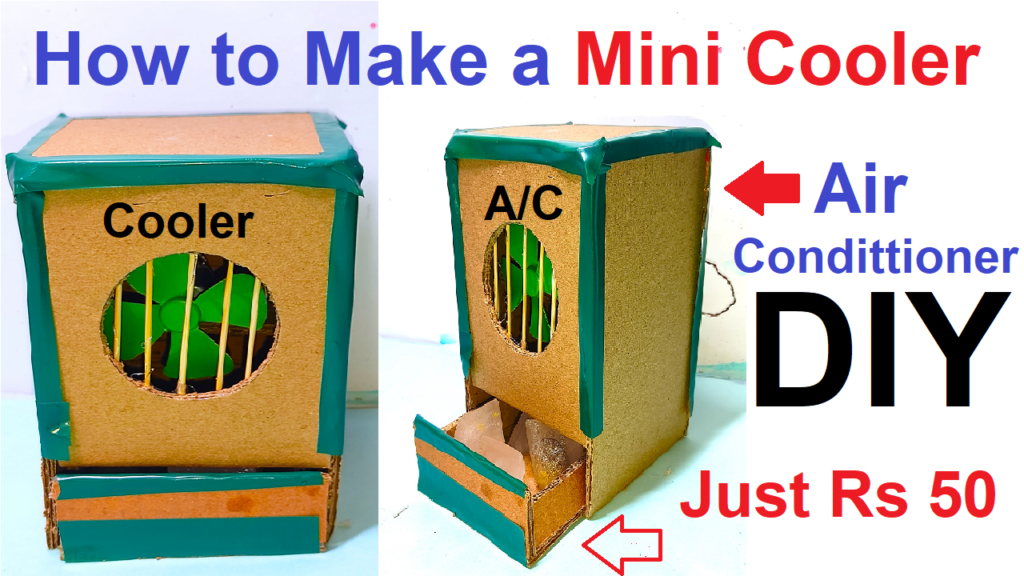Here’s an explanation of how this type of air cooler model works:
Turn on the switch to activate the DC motor and fan.
The fan draws in warm air from the surroundings through the intake vent.
As the air passes over the ice, it cools down due to the transfer of heat from the air to the ice.
The cooled air is then expelled through the outflow vent, providing a cooling effect.

Materials Needed:
- Styrofoam or plastic box (to act as the body of the cooler)
- Small fan
- Ice packs or crushed ice
- Cooling pads or absorbent material (sponges or cloth)
- Battery or power source
- Hole saw or utility knife
- Wire
- Switch (optional)
Construction Steps:
- Prepare the Box:
- Cut a hole in the box for the fan. Mount the fan on one side of the box, ensuring a secure fit.
- Create Space for Ice:
- Inside the box, create a compartment or space to place ice packs. This space should be easily accessible for inserting and replacing ice.
- Mount Cooling Pads:
- Attach cooling pads or absorbent material to the sides of the box where air will be drawn in. This enhances the cooling effect by providing a surface for ice to melt and evaporate.
- Power Source:
- Connect the fan to a power source, such as a battery. You can also use an electrical outlet with a power supply.
- Switch (Optional):
- Install a switch to control the power to the fan if desired.
How It Works:
- Ice Insertion:
- Place ice packs or crushed ice in the designated compartment inside the box.
- Fan Operation:
- When the fan is turned on, it draws in the ambient air from the surroundings.
- Cooling Pads and Ice:
- As the air passes through the cooling pads, the ice inside the box melts and absorbs heat from the air. This results in a lower temperature of the air.
- Evaporative Cooling:
- The moisture from the melted ice enhances the cooling effect as the air passes through the cooling pads. The concept here is still evaporative cooling, but the ice plays a significant role in lowering the air temperature.
- Cool Air Output:
- The fan then blows the cooled air out of the box, providing a refreshing breeze.
This simplified air cooler working model with ice pads offers a hands-on way to understand the principles of cooling through evaporation, making it an accessible and educational project for students. The project can be presented by explaining the science behind the model, the role of ice in the cooling process, and its practical applications.

